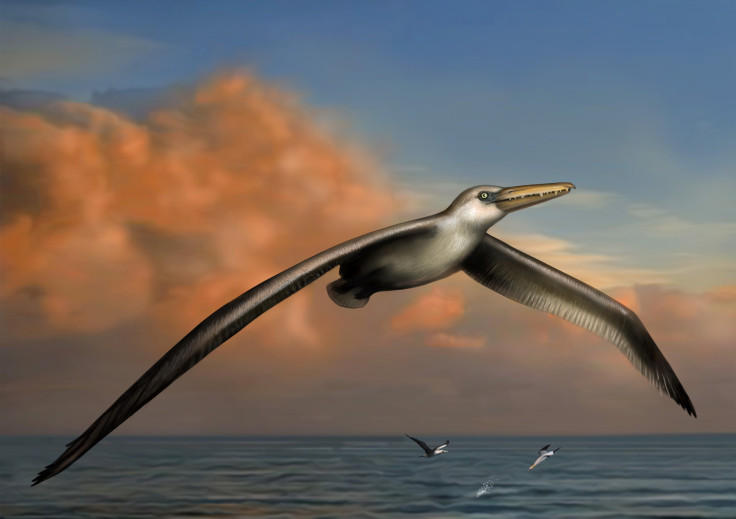Fossil Helps Identify Biggest-Ever Flying Bird With A Nearly 24-Foot Wingspan

Fossilized remains of an ancient giant bird have helped scientists identify it as the biggest flying bird that ever lived on Earth.
In a new study, published in the journal Proceedings of the National Academy of Sciences on Monday, scientists said that the bird, named “Pelagornis sandersi,” had a nearly 24 feet-long wingspan and it soared above the world’s oceans some 25 million to 28 million years ago. In 1983, the bird's fossils were discovered near where the Charleston International Airport is currently located in South Carolina. The bird's wingspan is found to have been nearly twice in length than that of the Royal Albatross, which has the largest wingspan of any living bird.
“Pelagornis sandersi could have traveled for extreme distances while crossing ocean waters in search of prey,” Daniel Ksepka of the Bruce Museum of Arts and Science in Greenwich, Connecticut, and the study’s lead author, said in a statement. “Pelagornithids were like creatures out of a fantasy novel - there is simply nothing like them around today.”

While the bird’s skeleton suggests that it was an expert flyer, its giant wings would have made it awkward on land, Discovery News reported, adding that Pelagornis sandersi was even bigger than Argentavis magnificens, which was the world’s largest-ever flying bird until now.
The scientists estimated the length of Pelagornis sandersi’s feathers by studying the relationship between bone lengths and feather lengths in living birds. Scientists also used computer models to determine that the bird was an efficient glider.
According to the scientists, Pelagornis sandersi had bony tooth-like spikes in its jaw, making it a previously unknown species of the Pelagornithidae, which is an extinct group of giant seabirds. Scientists believe that these giant birds vanished during the Pliocene period, only three million years ago, but the cause of their extinction is unclear.
“A giant bird lands at an airport 25 million years too soon—it's kind of amusing,” Ksepka told National Geographic. “Maybe he should have just waited and landed on the new runway.”
© Copyright IBTimes 2024. All rights reserved.












